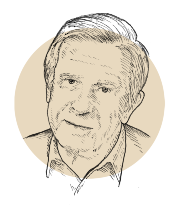The wood paneling is gilded and decorated with grotesque, multicolored characters, while the voussoir (vaulted) ceiling is decorated with the oil painting Le Lever de l’Aurore by Charles Le Brun. China cabinets, dressers, and a sumptuous marble fireplace topped with a portrait of Cardinal Mazarin by Pierre Mignard, a French aristocracy portraitist, rounds off the decor. Before the awestruck eyes of visitors, the former offices of the Hôtel Colbert de Villacerf spring to life as they were on Rue de Turenne in the 17th century. Destined for destruction as part of Baron Haussmann’s urban renovation plans, this “French-style wainscoting” was entirely dismantled, restored, and rebuilt at the Hôtel Carnavalet in the heart of the Marais.
After almost five years of renovation, the Paris history museum, an architectural and landscaping showcase, has made a daring decision. It has chosen to tell the story of the French capital, highlighting its reputation as a pioneer of arts and literature by revealing its creative richness, its private quarters, and the figures who inhabited them. Jean-Baptiste Colbert was a minister to King Louis XIV and the creator of the royal furniture workshops. He was one of the most illustrious characters of the Grand Siècle, but was not the only one to have left his mark on Paris. Under the Sun King, the Marquise de Sévigné, an icon of courtly love renowned for her letters to her daughter detailing the codes of elegance, spent almost twenty years at the Hôtel Carnavalet. Her renovated bedroom is one of the finest spaces in the museum, and even features the black lacquered desk on which she wrote her famous correspondence thanks to a near-miraculous restoration effort.
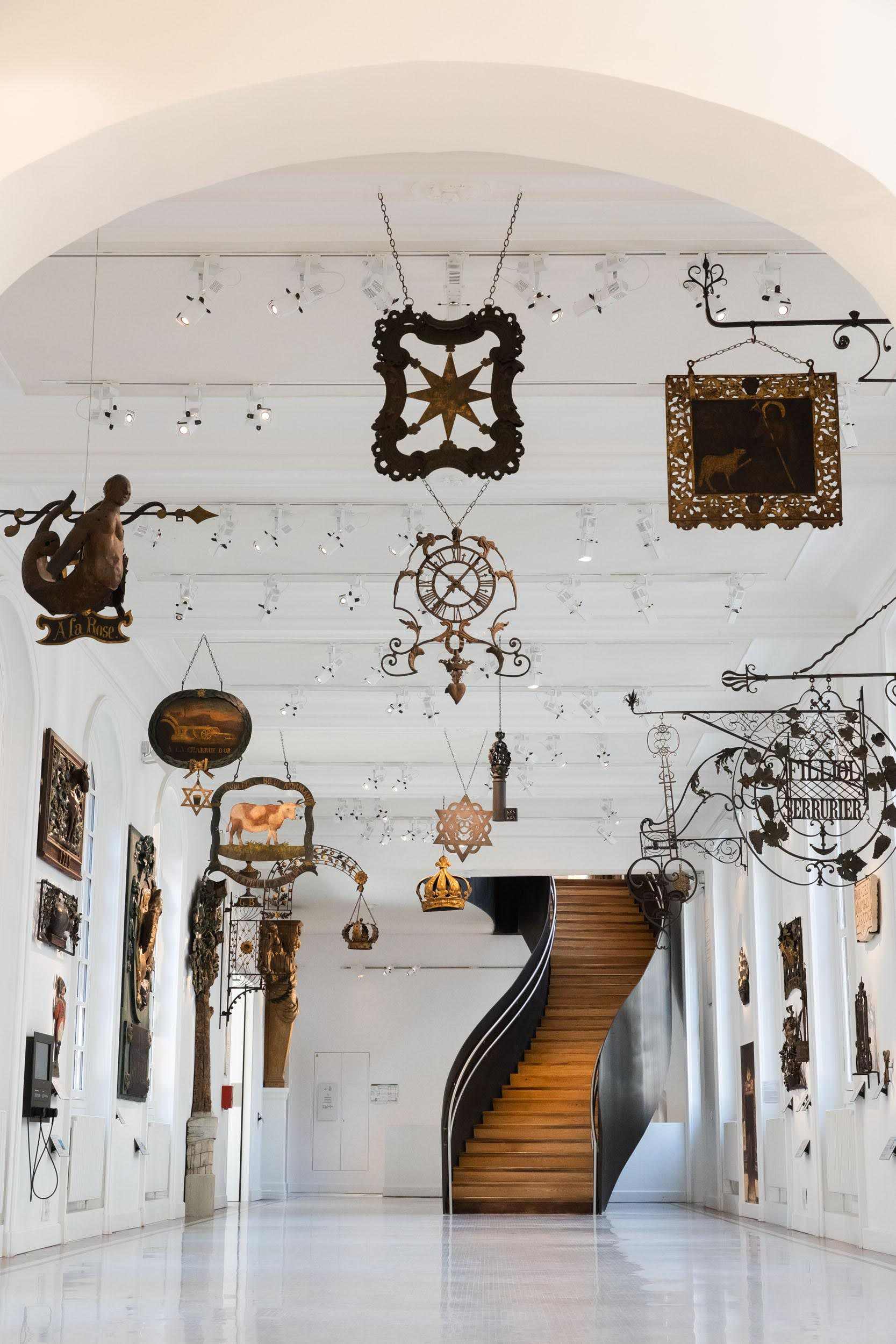
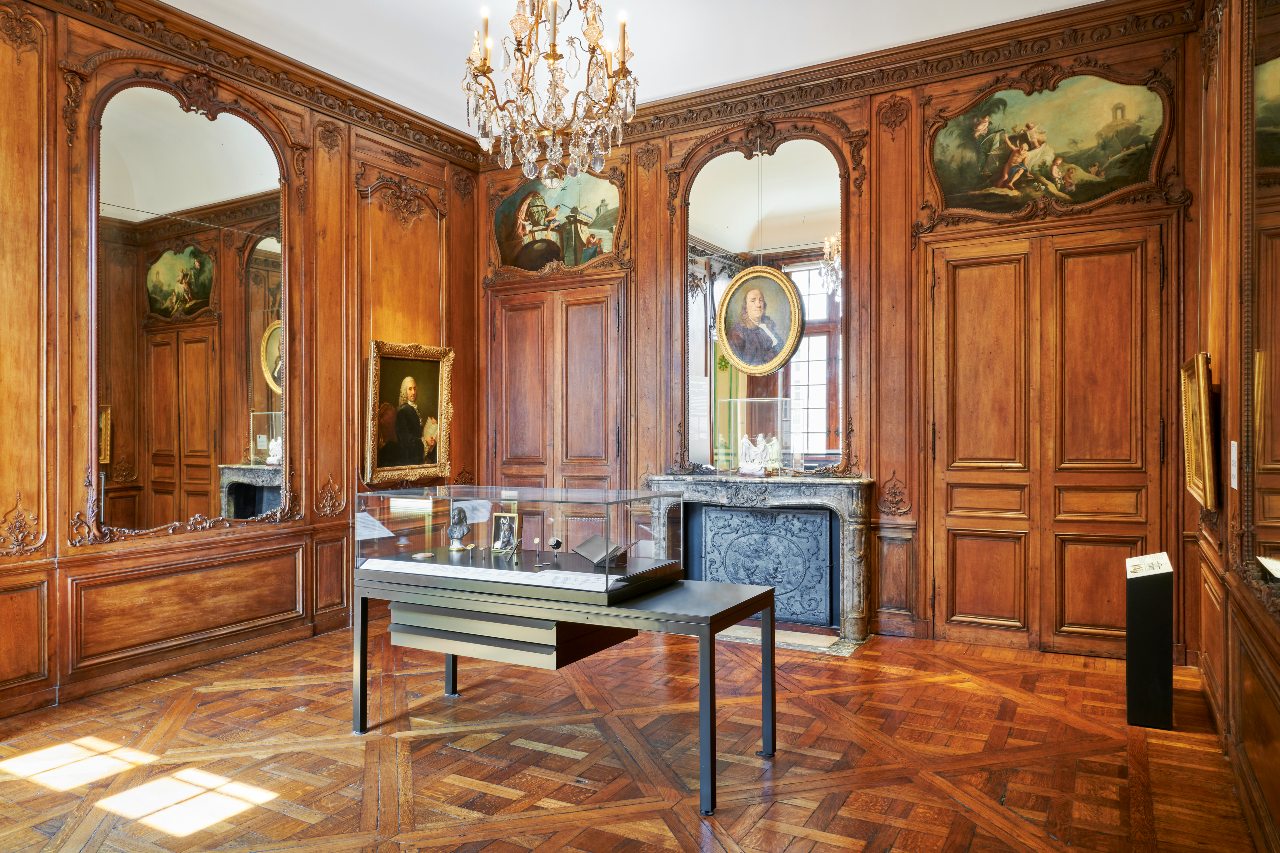
Fans of the Age of Enlightenment, named after the philosophical and cultural movement that championed reason, will also be delighted with the recreated quarters of the Hôtel de Breteuil, previously located at 27 Avenue de Matignon. This period did away with the endless curves of furniture and prized a style dominated by symmetry. In these rooms, straight lines and antique ornaments cover walls decorated in pink and blue. This return to classicism still allows for extravagance, as seen in a small living room whose mural panels painted by François Boucher, Honoré Fragonard, and pastoral artist Jean-Baptiste Huet use trompe-l’oeil to simulate a lattice-framed pavilion. An idyllic countryside scene with exotic animals lies just behind it. The space is a tribute to nature, a major discovery of this century. It was originally designed as part of an apartment on the Ile de la Cité inhabited by engraver Gilles Demarteau, but its function remains a mystery. The room may have been used as a boudoir, a bedroom, or even private quarters for women.
The New Face of Paris
The visit continues; time passes. Presenting the “Haussmannian explosion” led by the eponymous prefect of Paris under Napoleon III, whose modernization and sanitation project transformed the capital, the museum’s new layout analyzes the style resulting from this urban metamorphosis which lent the city its uniqueness and charm. Alongside a painting by Jean Béraud featuring the plunging necklines and Champagne flutes of a bourgeois ball, a series of labels informs visitors that Haussmann’s buildings followed strict rules. Just like the streets, they were drawn in perfectly straight lines. According to an official decree, the height was set at a maximum of 57.4 feet. The first floor was home to stores and cafés, while the second floor housed their workers. The third and fourth floors were beautiful spaces reserved for the upper classes. Relegated to the top floor under the zinc-clad roofs, servants would live in small apartments that were freezing in the winter and suffocatingly hot in the summer. The angle formed against the facade by the sloping ceilings of these garret rooms was never more than 45 degrees.
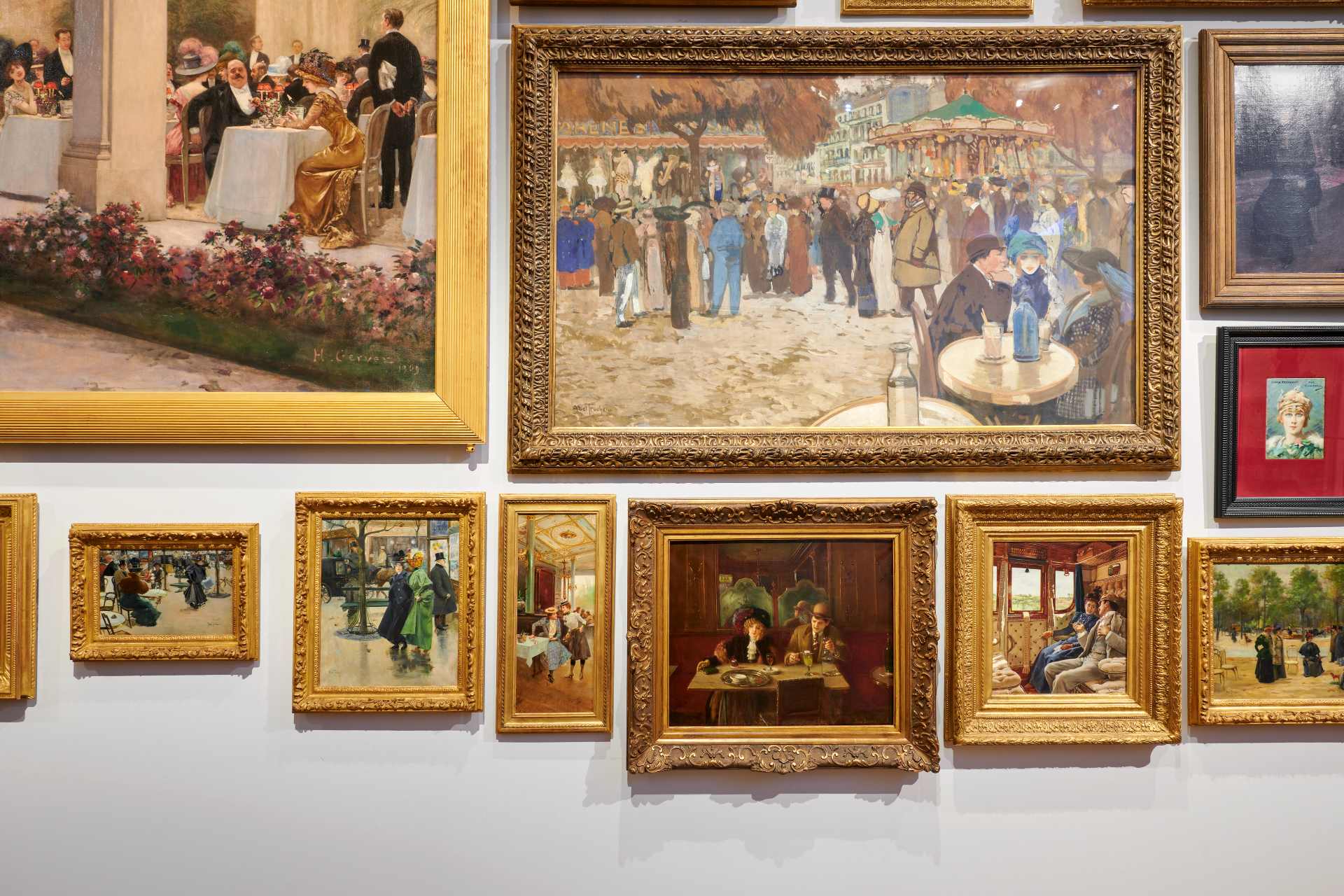
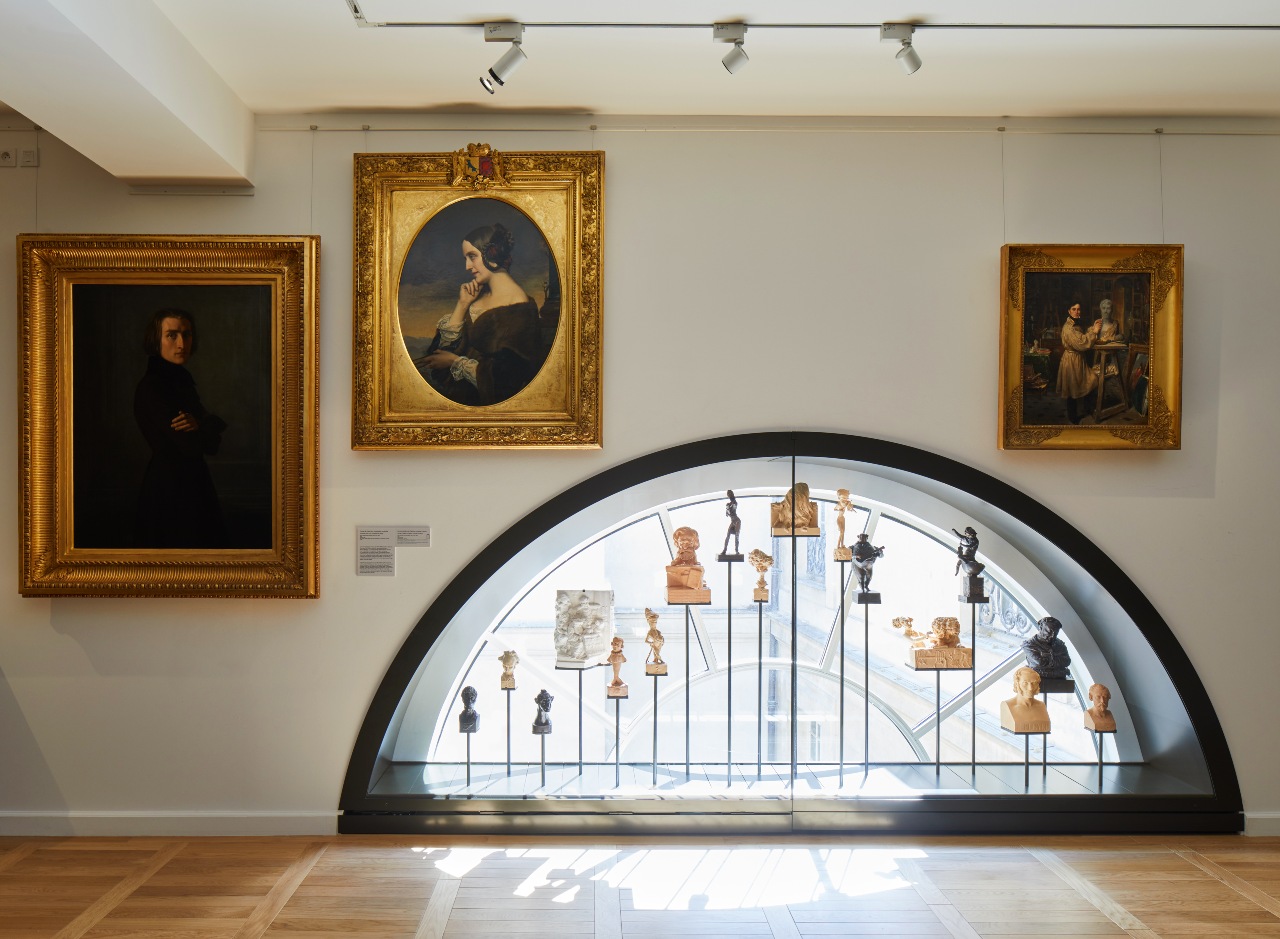
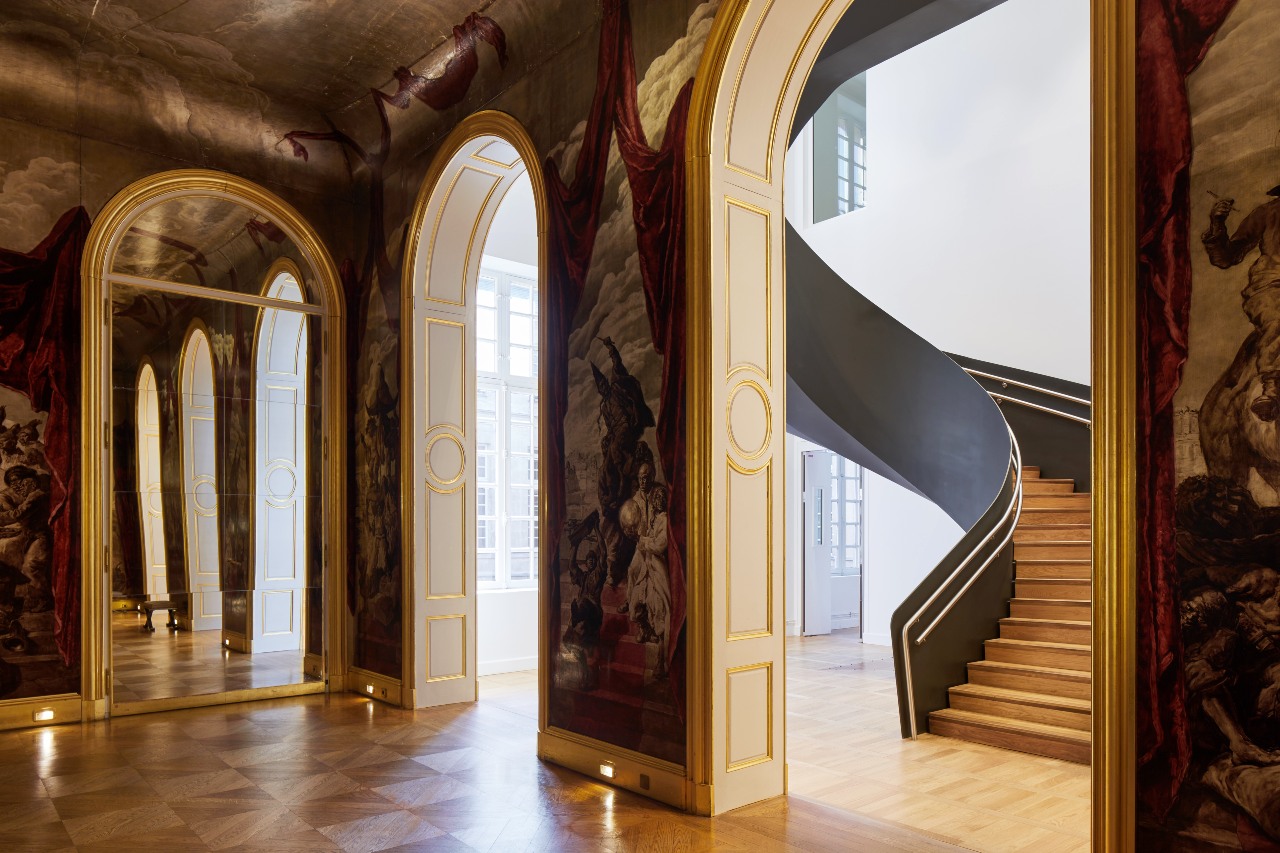
This Haussmannian Paris is the city of Marcel Proust, the universally renowned author of In Search of Lost Time. The writer (1871-1922) who dissected the smart-set of the Faubourg Saint-Germain on the left bank is a dual product of this era. Firstly, because he lived in west Paris between Auteuil, the Rue du Faubourg Saint-Honoré, the Parc Monceau, and the Bois de Boulogne, which were completely changed by Haussmann’s project. Secondly, because many of his characters, such as the Duchess de Guermantes, a figure of the old aristocracy, moved into the new, Second Empire mansions on the right bank. In an homage to the Parisian writer, the Musée Carnavalet has recreated the room on the Rue Hamelin where he spent his final years. The space offers a poignant immersion in his private life, with cork boards on the walls to muffle the noise of the city whose nightlife he used to revel in, and the brass bed in which he wrote the 4,000 pages of his masterpiece, its metal stained from the steam treatments prescribed to cure his chronic asthma. In a nod to modernity, there is also a théâtrophone which enabled him to listen, from his bed, to the first performances of Debussy’s Pelléas and Mélisande and Stravinsky’s The Rite of Spring at the Opéra de Paris.
Initially used as the residence of Jacques des Ligneris, president of the Paris Parliament, the mansion completed in 1560 adopted the “Carnavalet” moniker through the deformation of “Kernevenoy,” the name of the subsequent occupant, the widow of the head squire to Henri II. Expanded by pioneering classical architect François Mansart, inhabited by Madame de Sévigné, and eventually connected to the neighboring mansion, the Hôtel Le Peletier de Saint-Fargeau, the history museum could never gather all of Paris into just one building. But by displaying the creativity of its artisans and writers, from the Renaissance to the Belle Epoque, it offers a dazzling glimpse of the City of Light. Emperor Charles V was right: “Paris is not a city; it is a world.”
Article published in the March 2022 issue of France-Amérique. Subscribe to the magazine.

